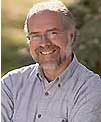There is this children’s picture book series about a magic school bus taking a class and her teacher to various places like the solar system, inside a volcano, a beehive, and the human body. I read the human body book. I remember the colorful pictures, the funny comments (at least for somebody who thinks 3rd grade jokes are funny), the logical flow of the book: food is eaten, digested, absorbed; air is inhaled, oxygen is used carbondioxyde is eliminated, etc. I still remember this because it left me with a sense of void. Here is a funny description of a human body dissected into organs that perform biochemical processes. This leaves no room for wonder, magic, awe.
How much more is the human organism! I am not even addressing the rest of the human being with his/her creativity, his/her feelings, etc. I am focusing solely on the physical-functional aspect of the human body:
Imagine what it takes to convert food into fuel and building blocks to sustain the human organism! How many processes involving enzymes and digestive juices from various organs must be activated in the right quantity and right sequence of time and space, how the peristalsis must be synchronized, sometimes slowed down, sometimes sped up, how the lining of the intestines decide the perfect time and location to absorb or reject food matter. So far so good. You could almost compare this to a conveyer belt with breaking down and sorting capacities. Almost.
On the other side of the gut is the portal vein (what a beautiful name) that carries the nutrients to the liver. Now it gets complex: How does the liver know what to do with the nutrients? What can be stored and what needs to be used for repair and maintenance and what organ needs what?
There must be a super sophisticated information highway in the body: fast, precise, flexible, adaptable, infallible. Every organ needs to know everything of each other at any time, 24/7 – yes, our system does not shut down even during sleep. It simply shifts from catabolic to anabolic processes. Energy needs to be shifted according to outer and inner events, sometimes in a split of a second. This involves hormones, nerves, blood – well, actually everything.
What else? The immune system guarantees that the body maintains its individuality fighting microbes and cancer.
What else? A wound heals. How does that work? How does a wound stop bleeding? Yes, I know about coagulation factors, but again there is a time sequence that needs to be observed otherwise it’s not going to work. How does the body know when to stop producing scar tissue?
What else? How can blood, which consists of 50% solid matter like red blood cells, white blood cells, and platelets, pass through capillaries that have a smaller diameter than red blood cells?
What else? Maintenance of body temperature, pH, sensory-motor integration, fine motor skills, apoptosis…
Now here is the awesome thing: We are fully unconscious of all these millions of processes that go on in our body at any given time, unless we feel dis-eased, feel pain.
Our body is the most humble and subtle servant. Who’s servant? The body serves that, which enables me to say “I”, the core of my being, my Self. My body enables me to be creative, to act, to make a difference in this world.
The older I get the more I realize that this relationship between body and I is more complex than that between a servant and a master. I am responsible to take good care of this body. Otherwise, it lets me know with pain and fatigue. The older I get the more time consuming this responsibility gets and the less my body tolerates. Good bye all-nighters, six packs, “all-you-can-eat”, Internet surfing, TV watching.
The older I get the more I appreciate my body. I probably will never understand the complex physiology and biochemistry of the body. However, what is more important for me is to grasp the essence of my body: that it is truly God’s awesome temple that I must learn to treat with reverence.

Peter Hinderberger, M.D., Ph.D., DIHom practices at Ruscombe. The mission of his practice is to promote optimal wellbeing by providing health care through an integrated approach, combining conventional and complementary therapies, which include Anthroposophic medicine, homeopathy, and salutogenesis.
